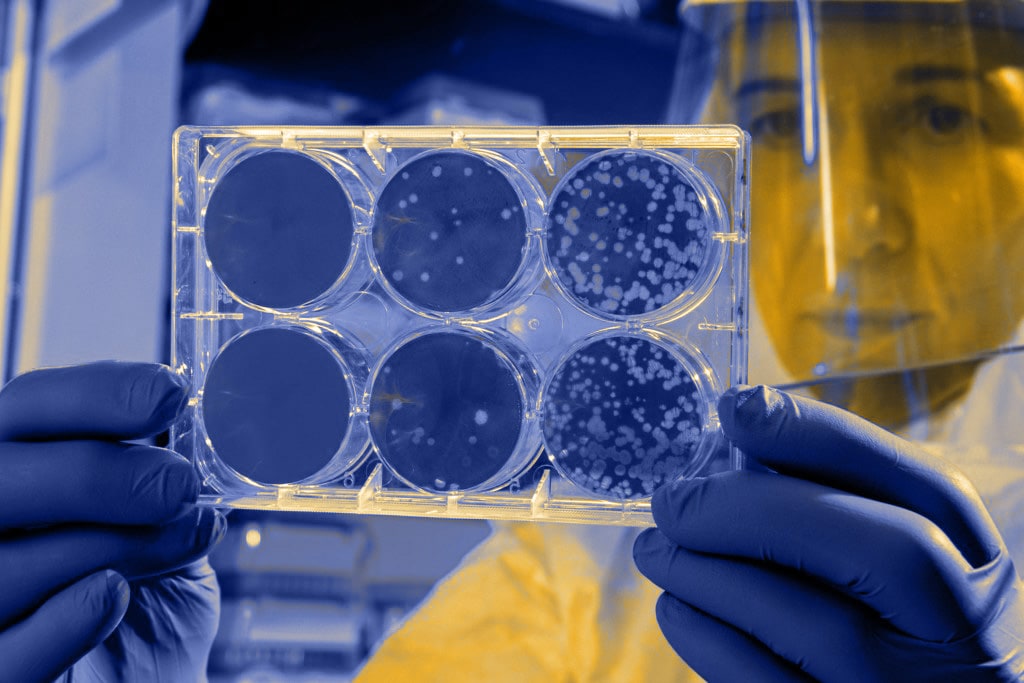SARS-CoV-2 RNA concentrations in primary municipal sewage sludge as a leading indicator of COVID-19 outbreak dynamics

RELEVANCE: This study reports that the levels of SARS-CoV-2 in municipal sewage allows to anticipate the changes in the number of SARS-CoV-2 confirmed cases by one one-week.
When municipal raw wastewater discharges into treatment facilities, solids are settled and collected into a matrix called (primary) sewage sludge, which was shown to contain a broad diversity of human viruses including commonly circulating coronavirus strains. The authors evaluated the potential of measuring SARS-CoV-2 RNA, reported to be present in the stool, in sludge in wastewater facilities to monitor the prevalence and dynamics of infection in determined populations. Epidemiological predictors of the disease are critical tools for governments to prepare for future waves of infection by implementing or relaxing public health measures to avoid transmission and mitigate the burden of disease.
METHOD: During March 19, 2020 to May 1 of 2020 in the New Haven, Connecticut (CT), USA metropolitan area, 2.5 mL of well-mixed daily primary sludge samples were collected from the wastewater treatment facility which serves approximately 200,000 residents. Primary sludge has a greater solids content (2 to 5%) than raw wastewater (0.01 to 0.05%) and hence is more suitable to detect SARS-CoV-2 RNA. Samples were taken daily between 8 and 10 am and stored at -80 ∞C until being analyzed. Of note, the sampling started before widespread individual testing in the region, and before lockdown measures being implemented throughout the State of Connecticut, USA. SARS-CoV-2 viral RNA was detected in the samples by RT-qPCR. For that, RNA was extracted using a commercially available kit optimized for RNA extraction from soil and collected in 50 µL of RNAse free water. Samples were diluted 5x and compared to neat RNA and analyzed for SARS-CoV2 RNA by RT-qPCR using the U.S. Center for Disease Control N1 and N2 primers sets. SARS-CoV-2 RNA concentrations were determined using a standard curve as previously described in doi: 10.1101/2020.03.30.20048108 and presented as virus RNA copies. SARS-CoV-2 RNA values ranged between 1.7 x 103 virus RNA copies mL-1 to 4.6 x 105 virus RNA copies mL-1. The lower concentration corresponded to a qRT-PCR cycle threshold (CT) value of 38.75. This value was set as the detection threshold for the method and sludge matrix. Overall, 96.5% of all CT values were less than 38 and values between 38 and 40 were reported as positive if detection occurred with virus nucleocapsid N1 and N2 primer sets in both replicates. To control and demonstrate the dynamic temporal behavior in SARS-CoV2, the values were compared to those obtained for the human ribonuclease P (RP) gene. Sewage sludge from 2018 was used as a control and no SARS-CoV-2 detection was observed from either N1 or N2 primers. These control sludges were consistently positive for the human RP gene. The RNA concentrations of SARS-CoV-2 viral RNA concentrations were quantitatively compared to data in local hospitals and testing data compiled by the community.
RESULTS: The paper presents a SARS-CoV-2 RNA concentration time course in primary sewage sludge during the COVID-19 outbreak of March 19, 2020 to May 1 of 2020 in the New Haven, CT metropolitan area. This treatment facility serves about 200,000 people. The COVID-19 number of documented cases by testing increased, during this period, from less than 29 to 2,609. From the sampling start and end dates, cities served by this wastewater treatment facility experienced an increase greater than 85 in confirmed COVID-19 cases (by testing). Interestingly, the peak in COVID-19 cases (April 16) occurred 7 days following the peak in SARS-CoV-2 RNA concentration (April 9). During this time, the average sludge SARS-CoV-2 RNA concentration were a seven-day leading indicator ahead of RNA COVID-19 testing data and led local hospital admissions data by three days. For hospital admissions, the cross-correlation analysis revealed a correlation coefficient of R=0.996 between smoothed RNA and hospital data when the former was shifted 3 days forward. For the peak in COVID-19 detection, a cross-correlation analysis resulted in a maximum correlation coefficient of R=0.994 when the COVID-19 testing data were shifted 7 days backwards.
DISCUSSION: This paper complements earlier studies of SARS-CoV-2 in wastewater treatment plants in the Netherlands (here and here, see a digest of the latter here) supporting sewage surveillance as a novel strategy to monitor the virus prevalence and spread in the population.
This paper now shows that primary sludge SARS-CoV-2 RNA concentrations could be used as a leading indicator of COVID-19 together with other epidemiology approaches such as widespread testing and hospital admissions. SARS-CoV-2 RNA concentrations in sludge preceded increased hospital admissions by 3 days and COVID-19 cases by 7 days. The potential utility of such an approach, although broadly applicable, maybe treatment plant-specific, as primary sludge process trains are not uniform. In addition, this method works for populations of 200,000 people and was not evaluated for smaller populations. When working it could be advantageous over other COVID-19 testing tools that are prompted by symptoms, which may give rise to underestimations of the true number of cases.
Contributing Scientist: Maria João Amorim
Translation: Guadalupe Cabral
Scientific paper: https://www.medrxiv.org/content/10.1101/2020.05.19.20105999v2
